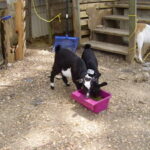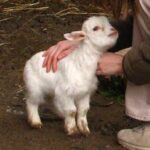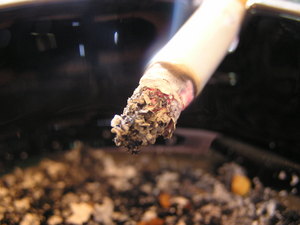Meat goat breeds are often seen as being Boer and Boer cross. While it is true that any goat can be used for meat, just as beef cattle are heavier muscled than dairy so it is with goats. This puts more pounds in the freezer for the space and resources used.
Often misspelled as boar or bore, the Boer is a South African breed that is a powerful, stocky, meaty goat. They typically have large horns on the bucks with smaller horns on the does. The Boer was introduced and initially brought incredibly high prices with $30,000 or more not uncommon. They were crossed with Spanish and Nubian goats largely due to availability and the high cost of Boers made it impractical to sell them for meat. When the market crashed many found themselves with expensive Boers that no longer held the value.
The initial Boers were white with red heads although sometimes black or tan were seen in crossbreds. So dominant has the Boer been that anything carrying Boer markings was priced higher. They have a high growth rate but some became disappointed in the Boer as to finish well it was said they had to be feedlot fed’. The most disappointed were the people who believed goats “eat anything”, bought expensive animals and turned them into barbed wire areas with scrub brush that offered little to no nutritional value.
The Myotonic goat is smaller and has several names including Tennessee fainting goat, wooden leg and stiff legged goats. This breed has a high meat to bone dressing percentage and can make a good outcross for other breeds. The unique trait of these goats is their “faint” which despite appearances is not fainting or seizures nor is it painful. The muscles will stiffen and the goat often falls down, particularly when startled or scared. These goats absolutely MUST have tight fences as they are helpless in a predator attack. They are aware of what is going on but cannot run. Owners must make sure especially with this breed there is proper protection.
The Kiko has also gained favor among many as a more efficient grazer than the Boer. The Kiko is a New Zealand meat breed developed from native feral goats using Anglo-Nubian, Toggenburg and Saanen bucks then selective breeding to produce a meaty, solid and deep bodied goat with plenty of muscling. The horns of the Kiko are different from a typical Boer and the Kiko excels under natural conditions. Like the Boer the Kiko has a breed registry to maintain purebred meat goat lines.
The Kiko Boer cross has found favor with some meat goat producers. Still others have selected heavier muscled dairy animals such as some producers in California in the mid 1990s with working towards establishing a Santa Teresa goat. Using largely Alpine and LaMancha these goats were slated as a dual purpose, milking a good amount but also producing weathers that finished out at heavy weights. Indeed at one carcass show the Santa Teresa easily won the class over all the Boer crosses with simply more meat over shoulders, hindquarters, ribs and top.
The best breed of meat goat depends on your situation. Like most animals the goat can benefit from crossbreeding commercially to increase the frame and function. Buck kids slated for finishing for meat should be castrated for reasons of meat quality, although some ethnic customers require only buck kids be consumed so your methods depend on your market.
No matter what breed or combination of breeds that you use good genetics, good feed, good fences and good management will product the best meat goats.



